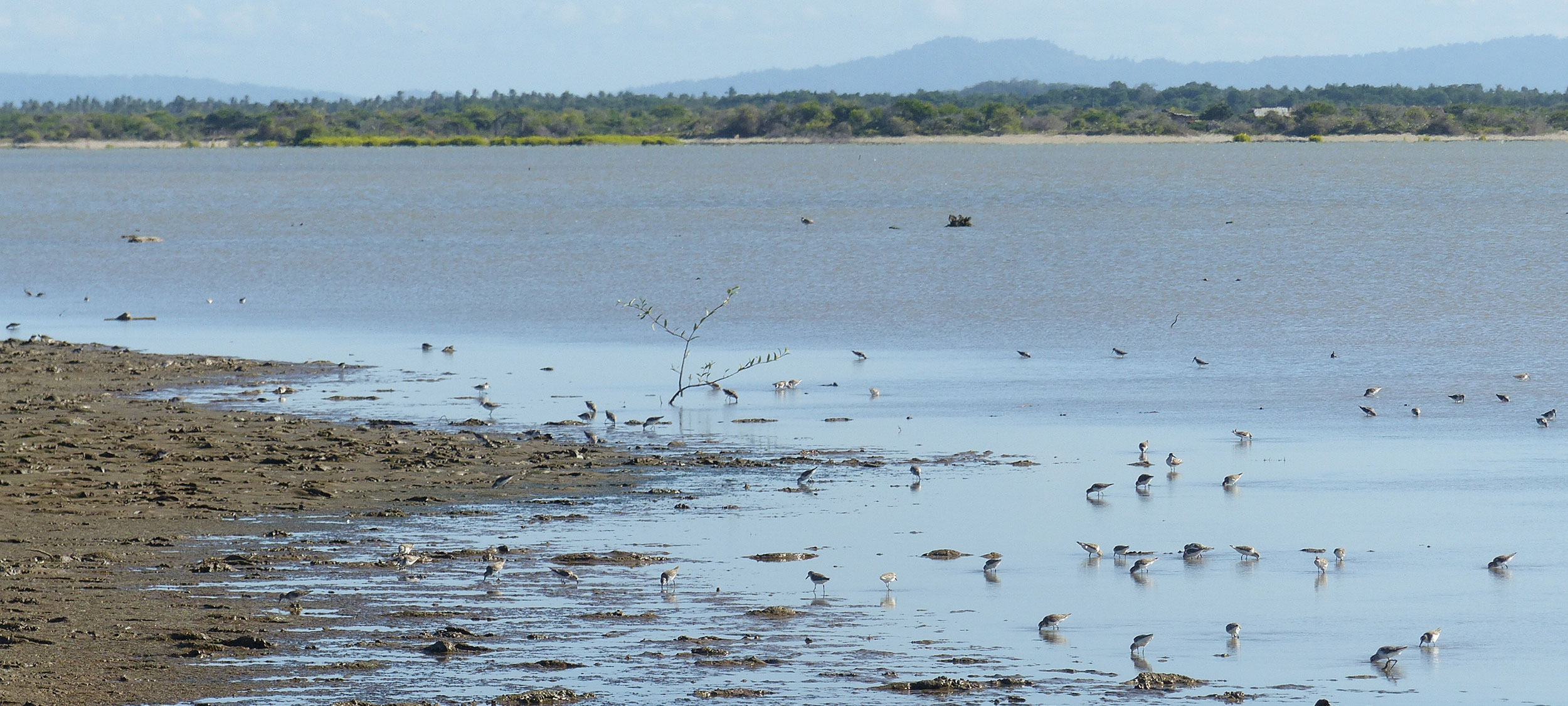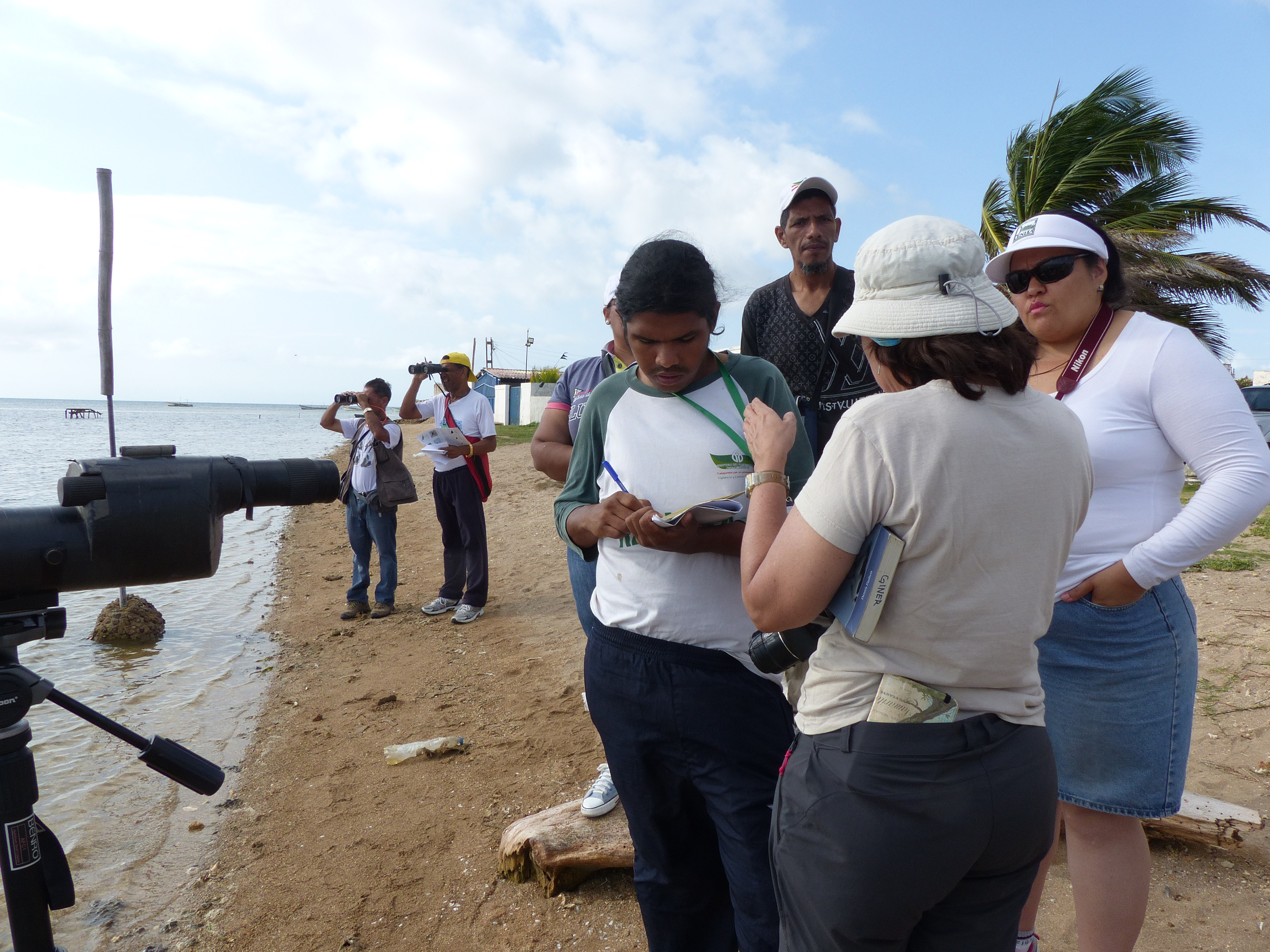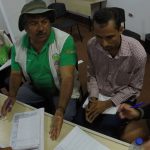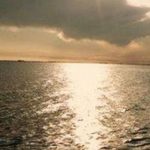Introduction to census methods and identification, and regional censuses in Paraguaná & Cuare, Falcón State, Venezuela
Back in March 2016, the Western Hemisphere Shorebird Reserve Network (WHSRN) ran a workshop on the Identification of Important Areas for Shorebirds in Venezuela, which identified 20 priority sites for the conservation of Venezuela’s shorebirds, four of which are in the state of Falcón. These areas are used by a dozen Atlantic Flyway Shorebird Initiative (AFSI) focal species. In addition, it is clear that the state includes large areas of prime shorebird habitat that remain unprotected and are insufficiently known.
Workshops
In order to find out more about these areas, in February–March 2017 WHSRN organised a regional training workshop on Shorebird Conservation in Venezuela: introduction to census methods and identification on the Paraguaná Peninsula, combined with a series of censuses in Paraguaná and eastern Falcón State. The activities were executed through the Venezuelan Foundation for the Defense of Nature – Fudena. Some 18 participants attended the regional workshop, most of them from Falcón State, including six staff of the local office of the Ministry of People’s Power for Ecosocialism and Waters (MINEA) and the Parks Institute (INPARQUES); others came from universities and NGOs.
The workshop was tailored to regional issues and was directed at a beginner to intermediate level to allow rangers, park guards, managers and biologists to incorporate shorebirds into existing work. Theory classes were taught by Sandra Giner of the Central University of Venezuela and WHSRN consultant ornithologist Chris Sharpe, with an introduction to the use of eBird for shorebird censuses by Jhonathan Miranda (Provita). The following day comprised a field visit to Adícora on the east coast of the peninsula, where tidal mudflats with seagrass meadows are bordered by a reef. Reception was good, with government officials vowing to include shorebird in their daily decision-making process. Few had previously realized that the shorebirds they encountered on a family visit to the beach underwent such extraordinary migrations.

Shorebirds at San Juan de los Cayos. Photo: Chris Sharpe.
Censuses
Censuses were carried out at 51 points, distributed on all coasts (N, E, S and W) of the Paraguaná Península, the adjacent mainland coast of Falcón (south coast of the Golfete de Coro), and at Cuare and San Juan de los Cayos in eastern Falcón. The observers were ornithologists Sandra Giner, Adriana Rodríguez-Ferraro (Simón Bolívar University), Jhonathan Miranda (Provita) and Chris Sharpe, together with veteran local biologist José Ochoa Graterol as guide and driver. The censuses produced important numbers of shorebirds, especially in the tidal mudflats of El Supí, Adicora, Punta Caimán, and San Juan de los Cayos. These sites are highly promising as potential WHSRN reserves. In particular, to judge by analysis of satellite imagery, the south coast of the Golfete de Coro has extensive areas of habitats for shorebirds, with impressive densities recorded on counts carried out at Punta Caimán. Several species (Black-bellied Pluvialis squatarola, Semipalmated Charadrius semipalmatus and Wilson’s Plovers C. wilsonia, Red Knot Calidris canutus and Whimbrel Numenius phaeopus) are found in numbers that, if simultaneous censuses could be made, would easily surpass thresholds, so that the area could be considered as a potential WHSRN reserve. This area is currently frequented by the satellite-tagged Whimbrel “Sachem”, and there is every indication that it could be an important wintering site for this species. At the same time, potential threats were noted, such as the accelerated construction of large-scale industrial shrimp farms in nearby areas.
Most notably, at one of the first census points, El Pico beach (a spit well-used by local fishermen), the team discovered a new species for Venezuela, the globally Near Threatened Piping Plover Charadrius melodus, only the second record for mainland South America.
The designation of Venezuela’s first WHSRN site, Salina Solar Los Olivitos (postulated following WHSRN fieldwork in March 2017), was announced as the team drove back to Caracas, a fitting recognition of the importance of Venezuela to the shorebirds of the Western Hemisphere. The news was widely publicized by local media, including some government outlets.

Workshop participants during the field trip to Paraguaná. Photo: Chris Sharpe.
Ongoing activities
Future work will verify the importance of wetlands on the south coast of the Golfete de Coro.
In order to help with teaching activities and as a vital tool in further research, seven telescopes, nine binoculars, a monocular, and two tripods were delivered from the United Kingdom for use during the workshop and for subsequent use by ornithologists in shorebird studies. Used optics were kindly donated by the Royal Society for the Protection of Birds – RSPB, the Norfolk-based optical shop Cley Spy, and by Guy Kirwan, Mike Dawson and Chris Sharpe.






